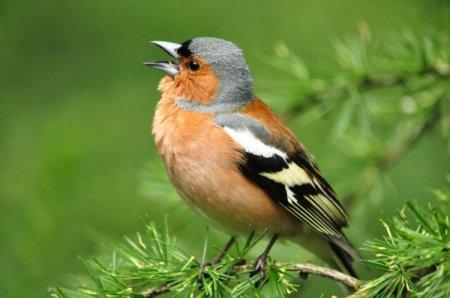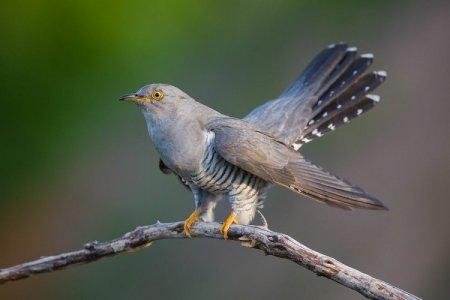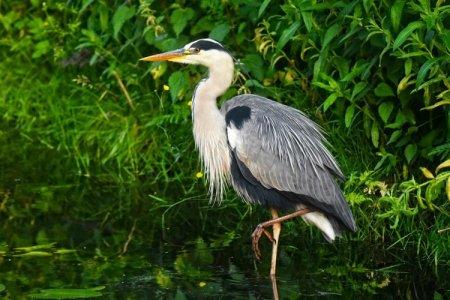
The noble crane is a sacred bird of many peoples. It symbolizes wisdom, loyalty, longevity and honor. We have all seen exquisite Japanese prints and paper cranes many times, but what do we really know about these birds?
general description
Cranes are very numerous and varied, but they can be distinguished by the main common features. Females and males almost do not differ from each other, apart from a slight difference in size.
Crane appearance
All cranes have a large body, a long, curved neck and long legs. The height ranges from 90 to 160 cm, and the wingspan is from 1.5 to 2.4 m. The smallest crane is a belladonna weighing about 2 kg, and the largest ones are Australian and Japanese, up to 11 kg.
The small, neat head is a smooth continuation of the neck and ends with a long, straight beak. It is very sharp, which helps the bird to hunt masterly. Many species have bald patches with rough skin on their heads. The tail appears to be long, but it is actually elongated flight feathers in folded wings.

Cranes, storks and herons: differences
With the similarity in the spring, the heron and the crane are easy to distinguish in flight. The fact is that cranes stretch their necks and legs, which ultimately makes them much more related to storks. But, unlike storks, cranes do not sit on poles and trees. The body of cranes looks thinner and more graceful than that of storks, and the beak is smaller. Their legs and neck are longer than those of the heron.

How long do cranes live?
Cranes are real feathered centenarians. Even in the wild, they easily live up to 20-25 years and more, and in favorable conditions in captivity, their age reaches 80 years.

History
Cranes are considered one of the most ancient bird families, which formed at the end of the dinosaur era. Their historical homeland is America, and from there they spread throughout the world. There are many rock paintings and other evidence that ancient people were very familiar with cranes.

Types of cranes
All crane species can be divided into several large categories. And we have already figured out how the most common of them differ!
Indian crane
The largest crane with a wingspan of up to 2.4 m. It has bluish plumage and an almost completely bald head with bright red skin. There are stiff bristles on the neck and throat.

Australian crane
Outwardly, it almost does not differ from the Indian crane, but it is slightly smaller and darker. Lives, respectively, in Australia. It is notable for its bare skin on the head and bright red or orange cheeks with a throat pouch.

Daursky crane
An inhabitant of East Asia, and the only crane with pinkish legs. The red eye mask is just bare skin. Part of the head and neck is white, while the rest of the plumage is of a dark gray shade, gradually lightening towards the ends of the wings and tail.

Gray crane
A very numerous species of cranes that lives throughout Eurasia. The wingspan reaches 2 m, and the grayish plumage casts a blue tint. The wings and belly are lighter, but the tail is almost black. A white stripe extends from the eyes down the neck.

Black crane
One of the most widespread types of Russia, but at the same time little-studied. It is very small, up to 3.5-4 kg, with black plumage, a white neck, a red spot on the head and a greenish beak.

Japanese crane
It is widespread not only in Japan, but also in the Far East. For a long time it was under the threat of extinction, but gradually the population is growing. It is one of the largest cranes with a wingspan of up to 2.5 m and a characteristic red cap on its head.

Demoiselle crane
Small species with a height of up to 90 cm and a maximum weight of 3 kg. Tufts of long white feathers distinctly diverge from the eyes. There is no characteristic bald spot on the head, and the beak is relatively short.

Sterkh
This species is most different from the rest, and it is even sometimes considered separately. The Siberian Crane lives in the northern regions of Russia and is included in the Red Book.

Lifestyle
Cranes live in pairs, but they can flock. Most often, they do this before the flight or during an unfavorable season. An interesting feature is the ability of the crane to sleep while standing on one leg in the water.
Habitat of cranes
Cranes are found literally on all continents. They are not present except in Antarctica and, oddly enough, in South America. They settle near water bodies and in wetlands. It is curious that in summer they prefer fresh water bodies, and in winter they prefer salty ones. Only two species of Demoiselle Cranes can live in the steppe.

What do cranes eat?
Within their range, cranes eat whatever they can reach. These are grasses, roots, leaves, berries, legumes, snails, worms, large insects, small mammals and other inhabitants of swamps. Chicks make attempts to hunt independently from the first days of life.

Wintering
Cranes from the northern regions migrate to the south for the winter in a large group high in the sky. They fly at an altitude of up to 1.5 km and masterfully use air currents. In fact, cranes do not fly in a wedge all the time and only form it in an unfavorable wind direction. During the flight, they make several long rest stops. In the first year of life, young birds fly away with their parents.

Breeding cranes
Cranes are monogamous, therefore they keep a pair until the end of the life of one of the partners. They prefer to breed in the rainy season, when their food supply increases significantly. The couple is formed by a special dance with jumping and clapping.
The cranes hide their nests on the banks of the swamps, hiding in dense vegetation. They are very large and can be up to several meters in diameter. Still undecided young birds can build several nests per season, and not stay in one.
The female lays 2-5 eggs, the size of which depends on the type of crane. They can grow up to 11-12 cm in diameter and are densely spotted. Of these, most often one chick survives in the end.
The eggs are incubated by both parents and the incubation period lasts about 30-35 days, again depending on the species. But already in a couple of days after hatching, the chicks make their first attempts to leave the nest. They grow rather quickly, but they are covered with normal plumage in 50-150 days. Sexual maturity occurs at 3 years, and in some species - at 5-7 years.

Natural enemies
Due to the fact that cranes inhabit almost the entire planet, their enemies are also very different. They are hunted by forest predators, such as foxes and bears, and also large birds, such as golden eagles. The fledgling chicks remain the most vulnerable, which wolves and raccoons do not mind eating.

Crane population
Almost all cranes are endangered, and some are on the verge of extinction. There are literally tens and hundreds of individuals of certain species, including residents of zoos and reserves. In particular, the American and Japanese cranes are endangered. The main reason is the reduction in the area of habitats.

Cranes - bird photo
Cranes inspired artists around the world with their beauty for a reason. Just take a closer look at them!



























